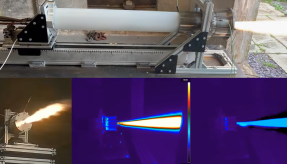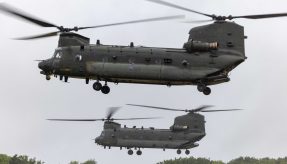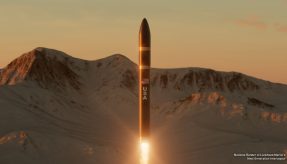
Battles are controlled and won by those who create an advantage. As part of its efforts to realise this, the Ministry of Defence is seeking to widen the roles of robotic and autonomous systems (RAS) in resupply, logistics and other military functions. Key to their success will be finding new, innovative ways to power these devices.
The modern dismounted soldier is required to carry more sophisticated electronic hardware, carrying around 82% of his bodyweight in combat equipment. This will likely include a tablet containing mission-critical information; targeting and distance finding devices; and other highly sophisticated pieces of kit – all of which require power.
Troops also have to negotiate hostile environments, facing extreme temperatures, dense vegetation, complex urban environments and more conventional threats such as Improvised Explosive Devices (IEDs) and enemy fire. These extra demands placed upon soldiers can lead to a significant increase in the physical burden placed upon troops, running the risk of causing injury and also reducing combat effectiveness.
The advancement in Unmanned Aerial Vehicles (UAVs) and the fundamental need to ease the burden on soldiers has led the MOD to seek lightweight, high-endurance, high-density electrical power sources for both RAS and other applications to help improve efficiency and reduce the risk to lives in such extreme hostile environments.
The Defence and Security Accelerator (DASA), part of the Defence Science and Technology Laboratory (Dstl), invited companies to submit proposals that will reliably generate power for man-portable and robotic and autonomous systems by launching the ‘Beyond Battery Power’ themed competition at the beginning of 2017.
Of particular interest to the MOD are those innovations that can improve endurance – stretching to days rather than minutes – and have high energy density of greater than 1000 watt hours per kg.
Dr Alan Groves, Dstl’s Emerging Technologies Topic Champion – Advanced Manufacture, said: “We are looking for reliable, lightweight and innovative solutions to generate higher electrical power outputs for future autonomous platform systems. We’re particularly interested in mid-range, mid-size autonomous systems where currently we see a major blocker to the use of those technologies through a lack durable lightweight power systems.
“We know that the future soldier will require a lot of power generation for their applications of radios and various other systems they need on the battlefield.”
The first phase of the competition made available £750,000, with a number of projects receiving around £40,000 to £80,000 worth of funding. Phase 1 deliverables are to be completed by the end of January 2018.
Phase 2 of the competition will see another potential £750,000 made available to those successful projects funded through phase 1 of the competition. The final stakeholder event will take place in December 2017 where bidders will demonstrate the successful outputs of phase 1 projects to stakeholders.
The potential for commercial exploitation in the civil market is also extremely high for technologies emerging from this competition. Devices such as mobile phones, tablets and wearables are constantly becoming more advanced with the only limitations seeming to be the lithium-ion batteries powering them.
The same conundrum faces the continuing evolution from the internal combustion engine to vehicles powered by electricity. While an electric car may boast greater efficiency and be emission-free, it is still likely to be powered by a lithium-ion battery and faces coming to a standstill soon after travelling over 100 miles.
Defence Procurement Minister Harriett Baldwin described DASA challenges such as the ‘Autonomous Last Mile Re-supply’ competition, which encouraged industry and academia to come up with innovative autonomous systems to deliver mission-critical supplies, and Beyond Battery Power as ‘vital’ in ensuring innovation is fully exploited. She said: “Investment in innovation and harnessing the best ideas that industry, commercial companies and academia are working on means we can maintain our military advantage and the UK’s capability.”
If you would like to join our community and read more articles like this then please click here.
Autonomous Last Mile Re-supply beyond battery power DASA Defence and Security Accelerator Improvised Explosive Devices Ministry of Defence MOD







